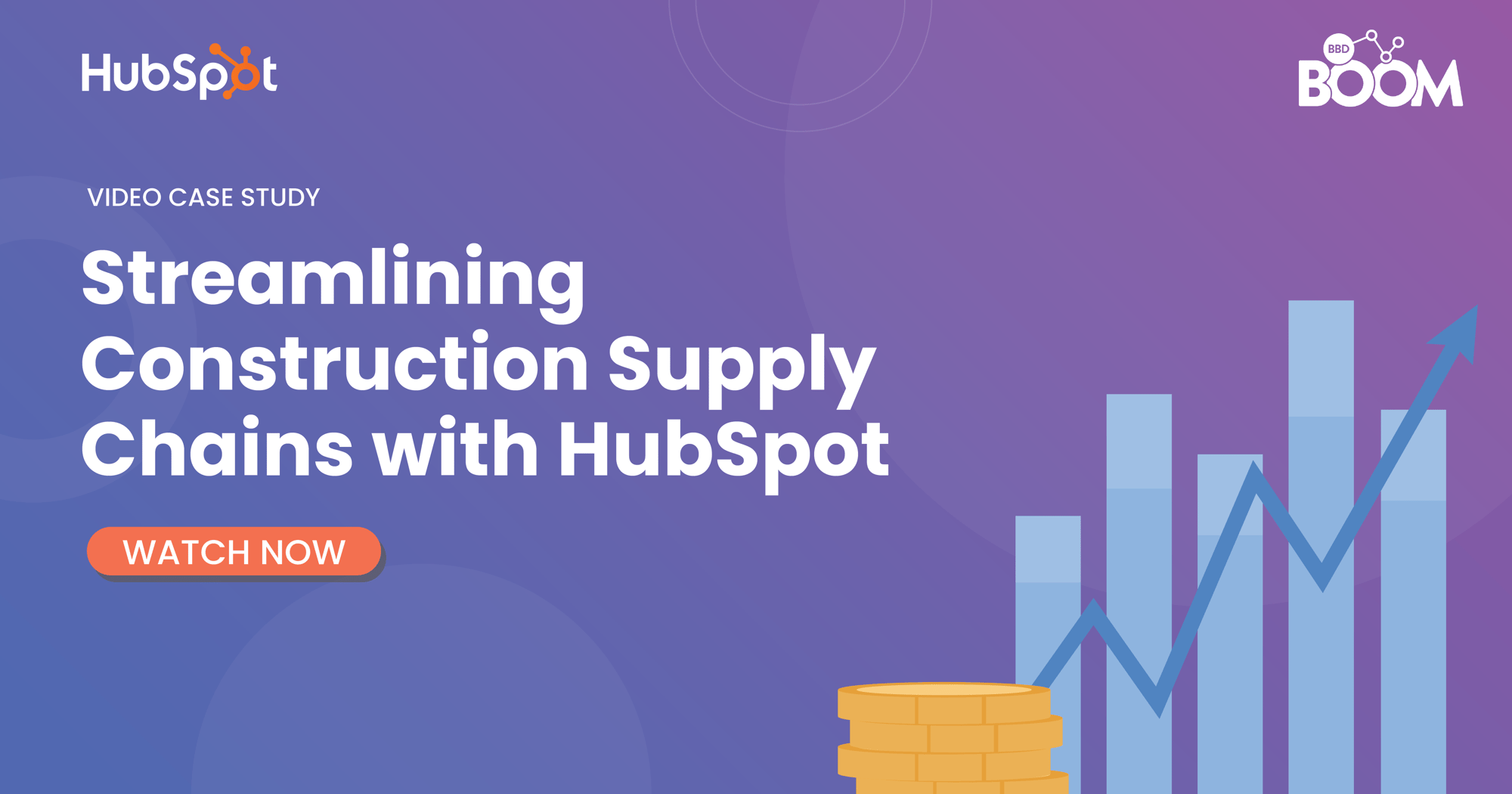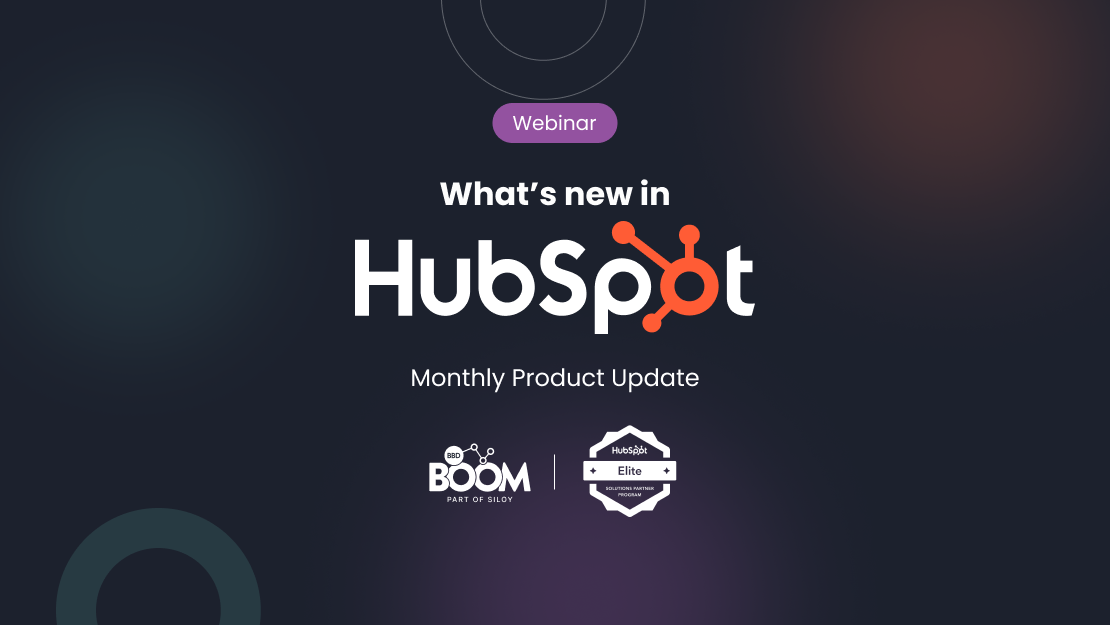It’s no secret that the key to making the most of your business’s marketing efforts starts with analysing the performance of your campaigns. But with the rapidly increasing popularity of inbound marketing, and its competitive impact on businesses, it’s no longer enough just to know how many conversions your site has received. Today, you need to go into much greater detail to understand where your leads came from and how they interacted with your site. This will help you to get the most from your investment and to optimise your inbound marketing efforts.
When thinking about common web analytics tools, particularly in terms of inbound marketing, one name usually comes to mind: Google Analytics. Although, HubSpot’s reporting tool is growing to be quite the competitor when it comes to helping your business grow as a whole.
So, which one is best for you? This blog will dive into the key differences and, hopefully, help you evaluate which would be most suitable for the needs of your business.
Traffic Reporting
First and foremost, let’s explore one of the most important metrics; website traffic. After all, it is this that enables you to see where your highest-converting traffic comes from and paints a picture of how your visitors both find and then engage with you. This gives you valuable insight into opportunities to focus your marketing efforts.
Both HubSpot and Google Analytics provide the ability to change and compare date ranges, so you can discover how your website is performing over time. For example, both allow you to compare how well your website is converting year on year. Similarly, each platform allows you to analyse visitors to your website based on where they came from, known as a ‘source’, and how they arrived at your site, the ‘medium’. If you want to understand this further, both tools provide additional layers of detail, such as the specific keywords a visitor used to find you or the particular URL they came from.
Although Google Analytics offers more advanced reporting tools, such as the ability to view your visitors’ device type or differentiate between new and returning traffic, it means the learning curve is significantly longer when learning how to navigate the tool. In contrast, HubSpot provides a simpler user experience and is more intuitive. It is a particularly useful platform if you want to be able to view key metrics at a glance, without having to spend hours learning how to navigate it beforehand.
Page Views
Whilst it is important for marketers to know about their website visitors, it also pays to know which pages they are actually visiting, so that future marketing efforts can be optimised based on the insights gained. HubSpot and Google Analytics both offer an insight into your best performing pages, including blog posts, landing pages and website pages, as well as further metrics, such as the average time visitors have spent on a particular page.
However, in terms of additional features, the platforms differ slightly. Google Analytics offers ‘unique page views’, a metric that aggregates page views by the same user during one session, rather than counting separate views each time the same visitor refreshes their browser. Arguably, this provides a more accurate impression of your potential customers. However, Google’s vast range of additional features can become overwhelming, and may make it harder to see how your website performance impacts your pipeline and revenue. In HubSpot, you are able to save reports that are most beneficial for your business goals, giving you an ‘at a glance’ view of the metrics that matter most to your business. In addition, you can view how many people are clicking on your CTAs, providing insight into why some pages might be converting better than others.
Conversion Rates
Although traffic and page views are essential in understanding the bigger picture, the goal of many marketing teams is to generate leads, right? So let’s dive into conversion reporting.
Both platforms are similar in that they allow you to track how visitors have interacted with your site and which sources have the highest conversion rates. In addition, Google Analytics allows you to track ‘user journeys’ or, in other words, the exact pages a visitor interacted with across your site. This feature lets you see where visitors tend to leave your website, providing insight into the specific pages which could be optimised to drive greater levels of engagement. On the other hand, HubSpot provides a custom contact attribution report feature. This enables you to analyse exactly how the interactions your leads had with your site led to a conversion, so you can better understand which of your marketing efforts attract leads and which areas may need optimising.
Contact Data
Contact data provides valuable customer insights, showing the quality of the leads you’re generating without the need to communicate with your sales team.
The HubSpot platform is fully integrated, meaning new leads will instantly appear in your CRM. This is perfect for marketers looking to use re-marketing or who wish to nurture their leads, as it is possible to see timelines for specific contacts detailing which pages they visited and where they converted. In addition, HubSpot allows you to create reports to analyse your contacts, including new and returning contacts and the average number of new contacts within a particular date range. This allows you to optimise based on demographics such as sector and job title and helps you to view your contacts as what they are; real people! In contrast, all of Google Analytics’ contacts are anonymous, which runs the risk of treating potential customers as just marketing KPIs, rather than real people in the flywheel, jeopardising your marketing efforts.
Search Engine Optimisation Reporting
Another key aspect to consider when thinking about how you can make the most of your investment is search engine optimisation (SEO).
While Google Analytics offers limited scope for reporting on your SEO efforts without having to integrate it with another platform, HubSpot reporting is much more comprehensive and has built-in SEO tools. For example, their content strategy tool enables you to plan your SEO approach and make sure you’re ranking high in organic search results. In addition, it offers topic suggestions for your content based on relevance, competition and popularity. You can also see detailed reports on your performance, such as where your content ranks for particular search queries, so you can learn what’s working and where you can make improvements. Pretty useful, right?
Conclusion
Google Analytics and HubSpot are both powerful reporting platforms for fast-scaling businesses and are consistently regarded as the top two options for analytics solutions. While Google Analytics has more in-depth tools, this means it can take longer to learn and may require additional resources in order to make the most of. HubSpot, however, is generally easier to navigate and provides a quick view of the metrics that matter most to grow your business.
Overall, both platforms have their benefits and limitations, and it is ultimately your business needs that determine which is more suitable. If you want simplicity and reporting metrics at your fingertips, and are interested in making the switch from Google Analytics to HubSpot or even integrating the two, click here to get in touch with our team or book a meeting with our Solutions Architect.
If you’d like to understand more about how reporting and analytics fit into an entire marketing campaign, check out our infographic, The Anatomy of a Multichannel Marketing Campaign, below.
.png?width=877&height=508&name=bbd-boom-siloy-navy+blue-logo%20(1).png)
.png)








